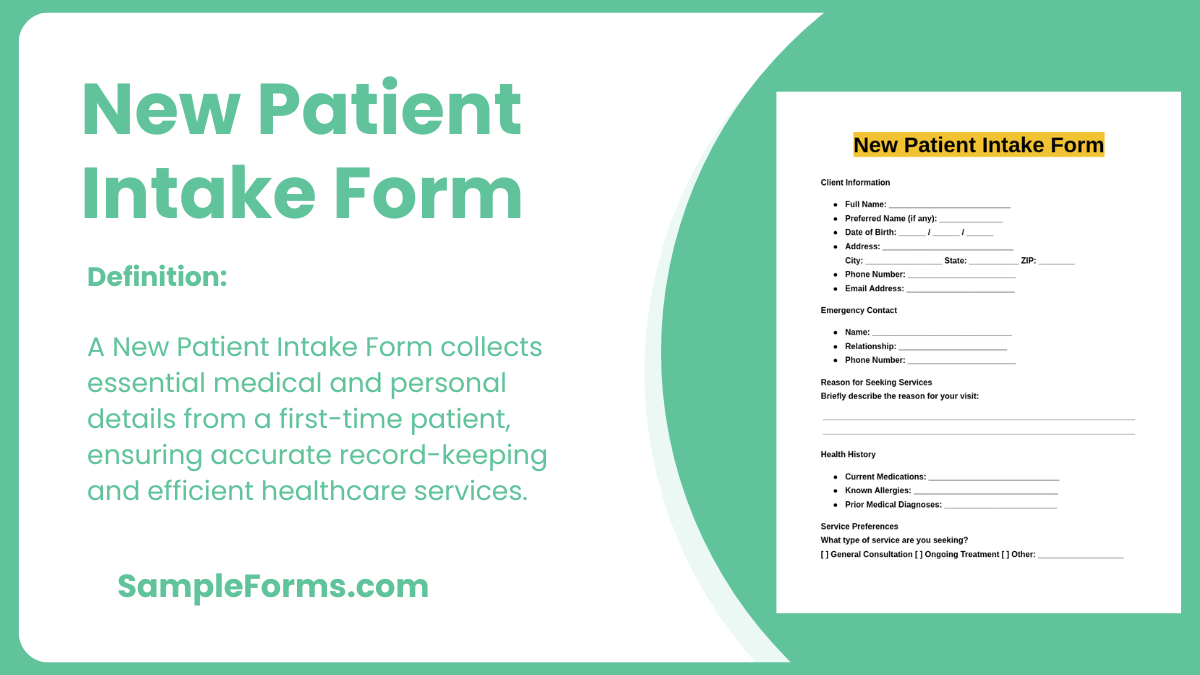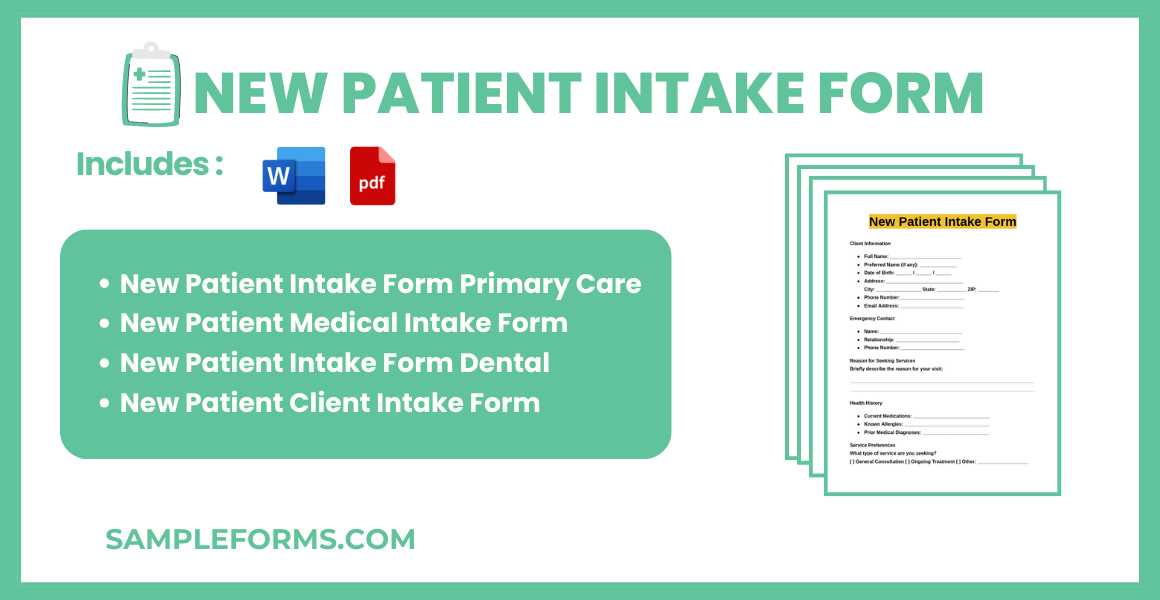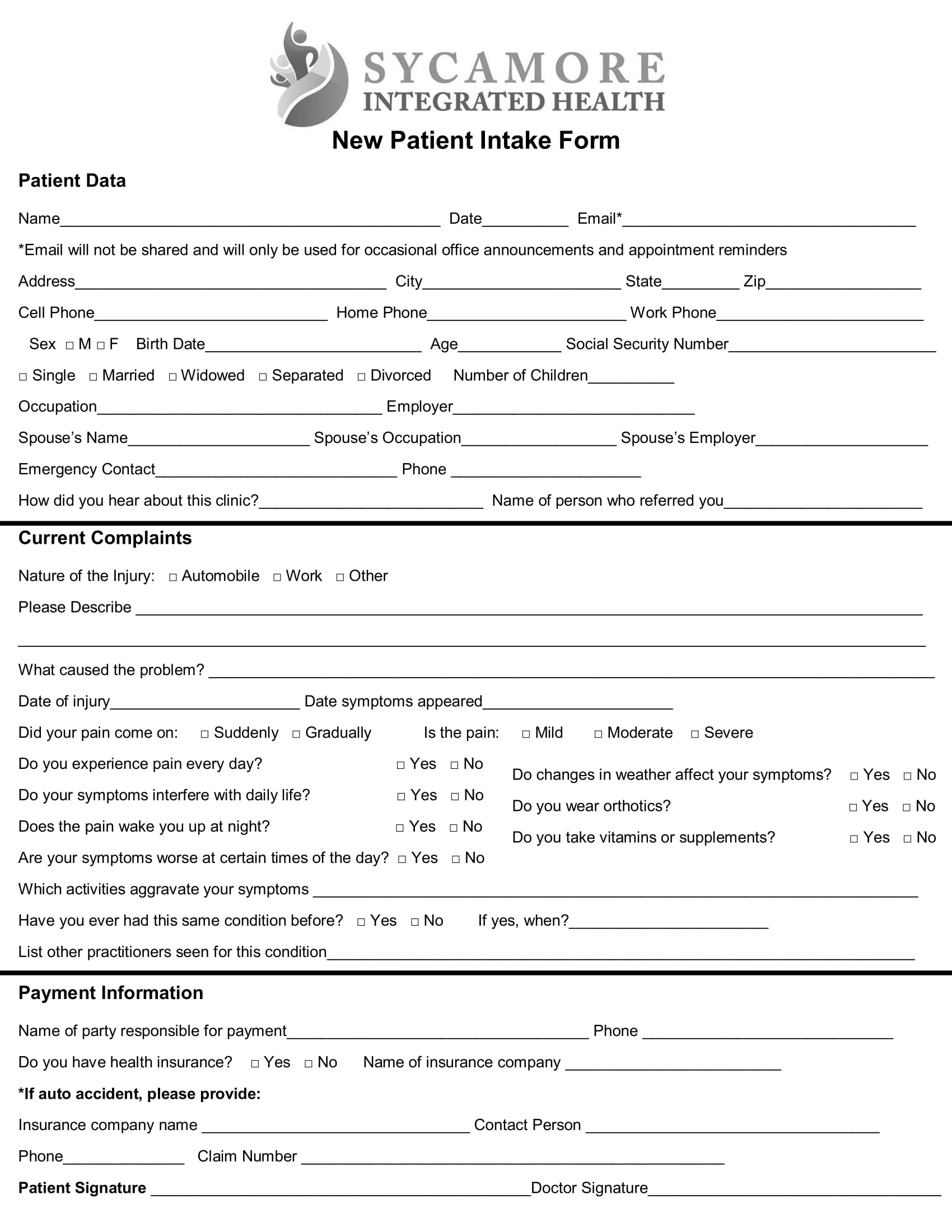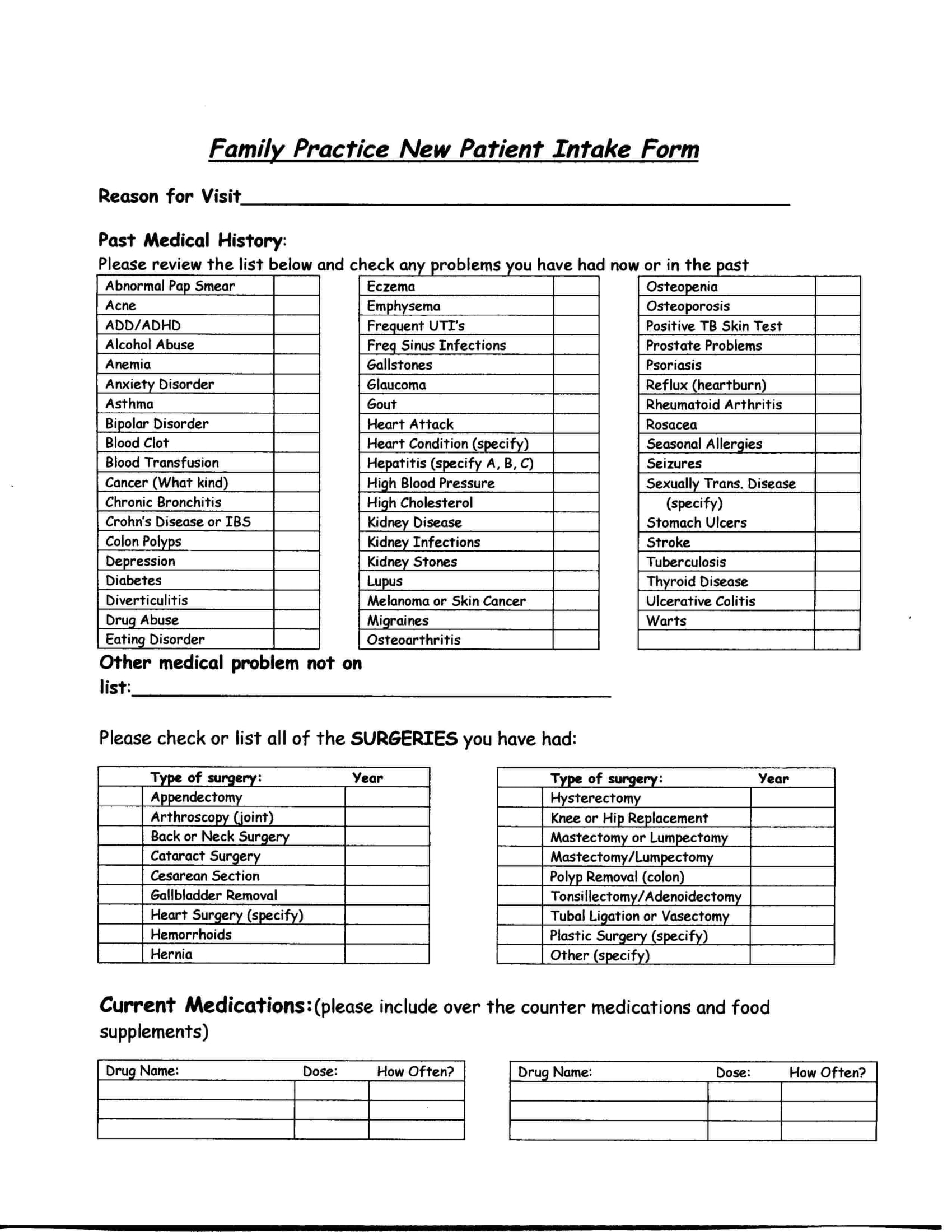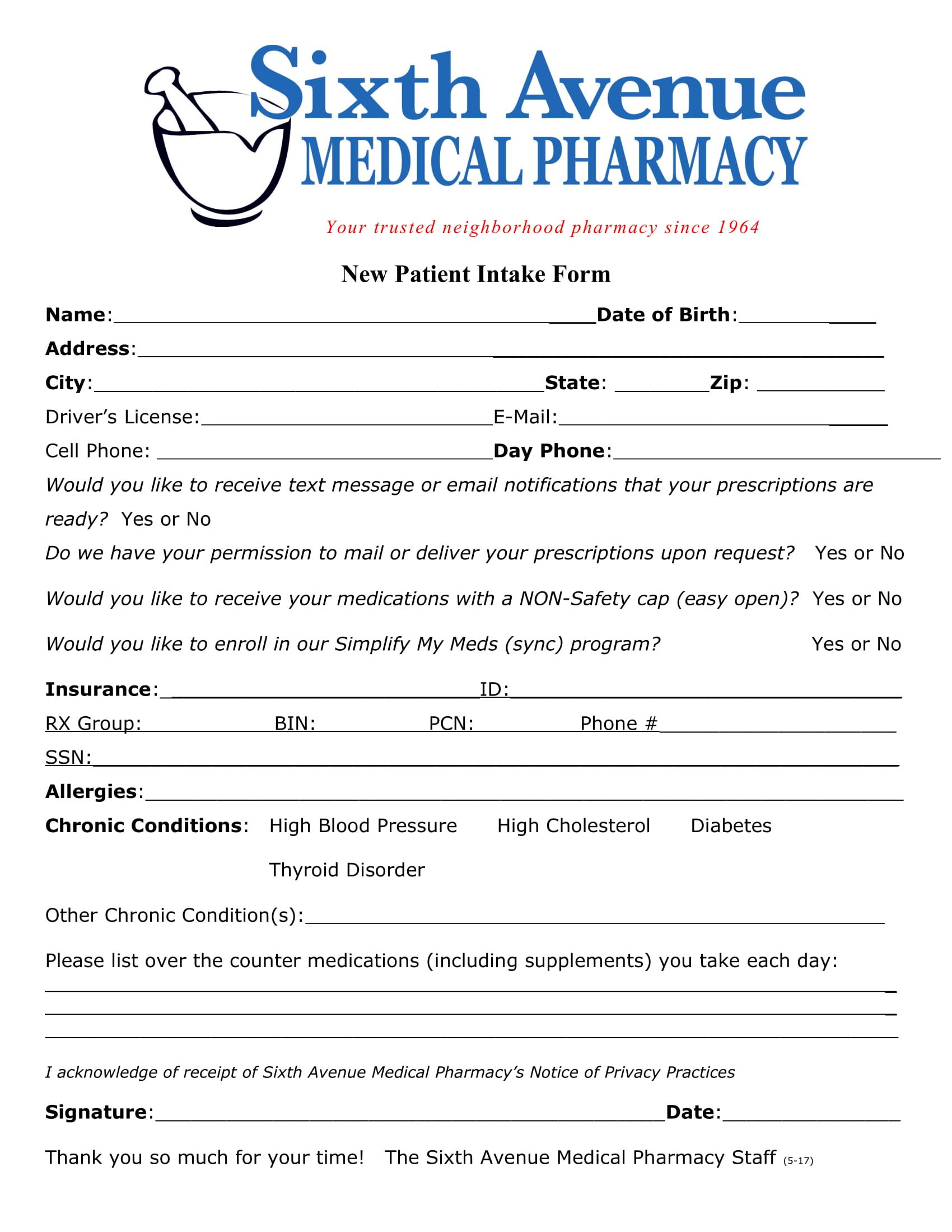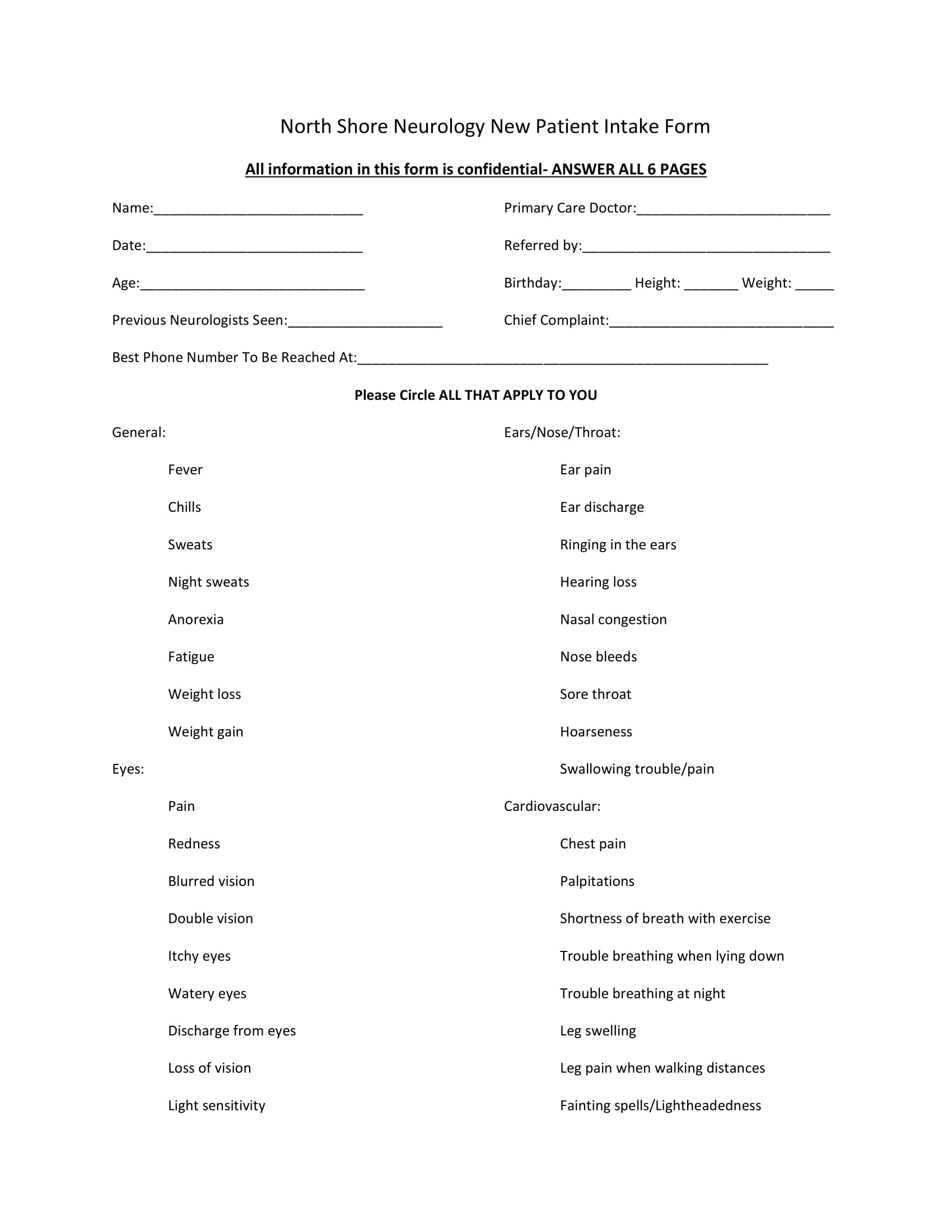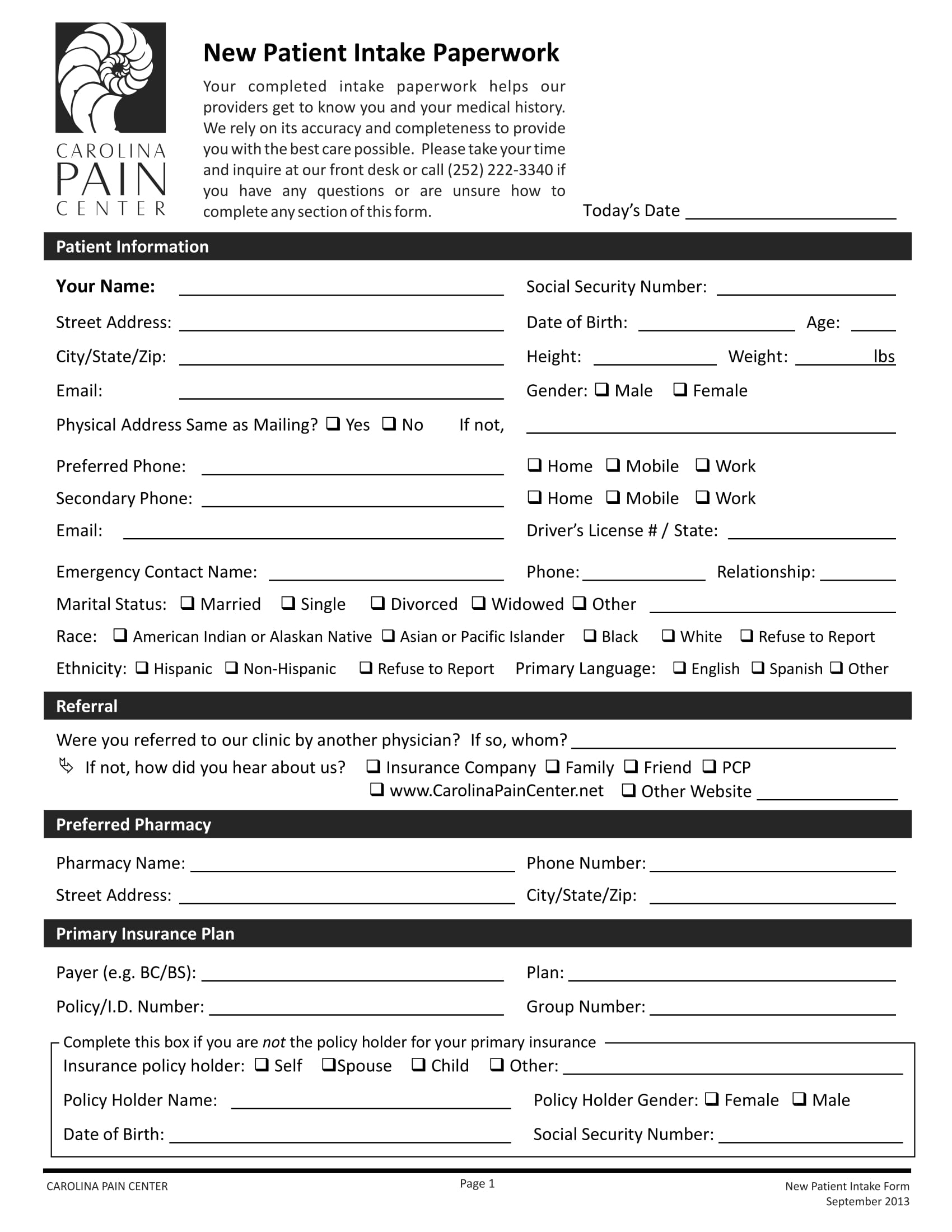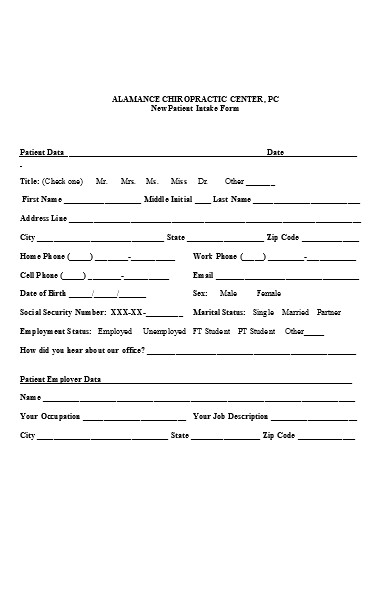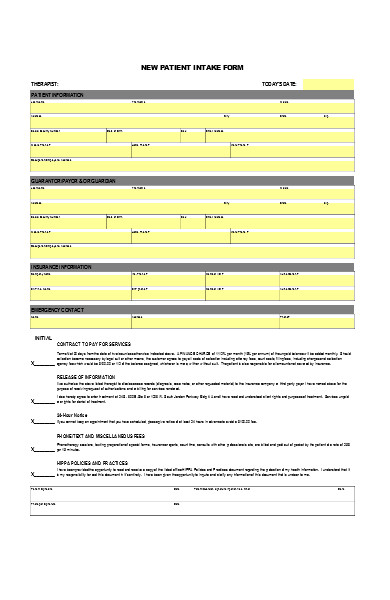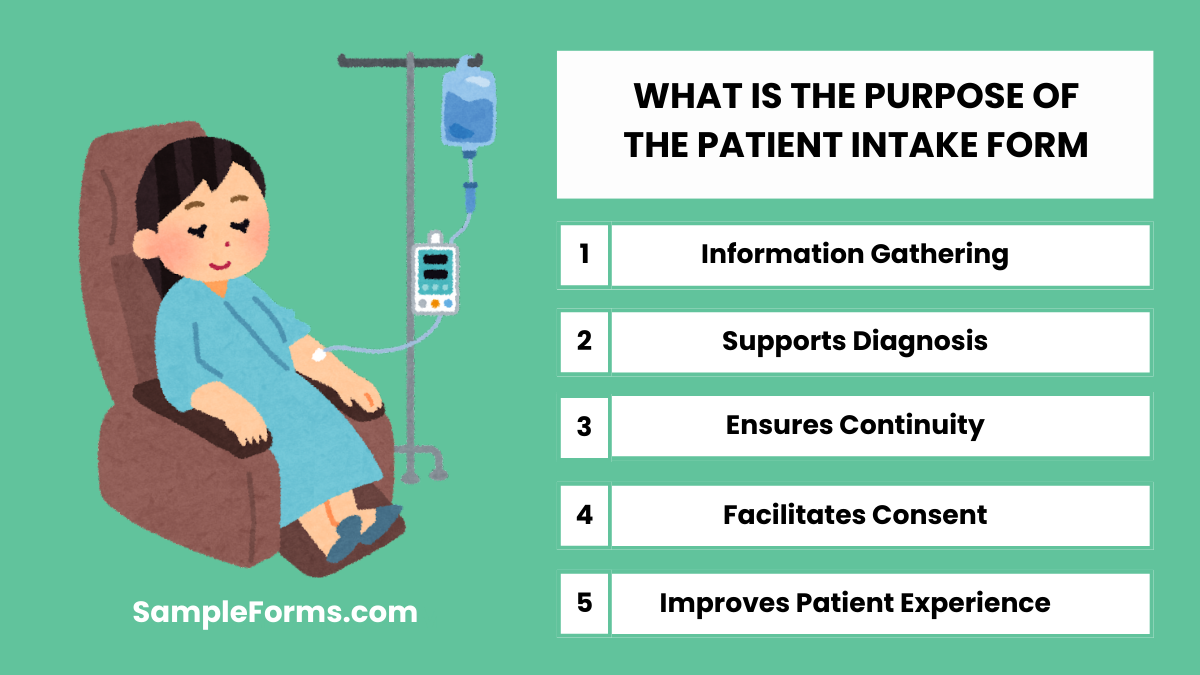An Intake Form and Patient Form is crucial for collecting accurate medical, personal, and contact details before appointments. This comprehensive guide explores the importance of well-designed forms in streamlining patient onboarding, enhancing care, and ensuring compliance with healthcare regulations. Learn how to include essential information like health history, medications, and insurance details. Tailored examples and practical tips provide insights into creating professional forms that improve efficiency and communication between patients and providers. Whether for clinics, hospitals, or specialty practices, this guide ensures you build effective forms for smooth operations and enhanced patient care.
Download New Patient Intake Form Bundle
What is New Patient Intake Form?
A New Patient Intake Form is a document used to collect personal, medical, and insurance details from new patients. It ensures accurate records, streamlines healthcare processes, and improves communication between healthcare providers and patients. The disclosed data will be gathered to the management system of the hospital or clinic and will be kept as a record for the patient.
New Patient Intake Format
Patient Information
Name: __________________________
Date of Birth: __________________________
Address: __________________________
Phone Number: __________________________
Medical History
Do you have any allergies? __________________________
Current Medications: __________________________
Chronic Conditions: __________________________
Insurance Details
Provider Name: __________________________
Policy Number: __________________________
Emergency Contact
Name: __________________________
Relationship: __________________________
Contact Number: __________________________
New Patient Intake Form Primary Care
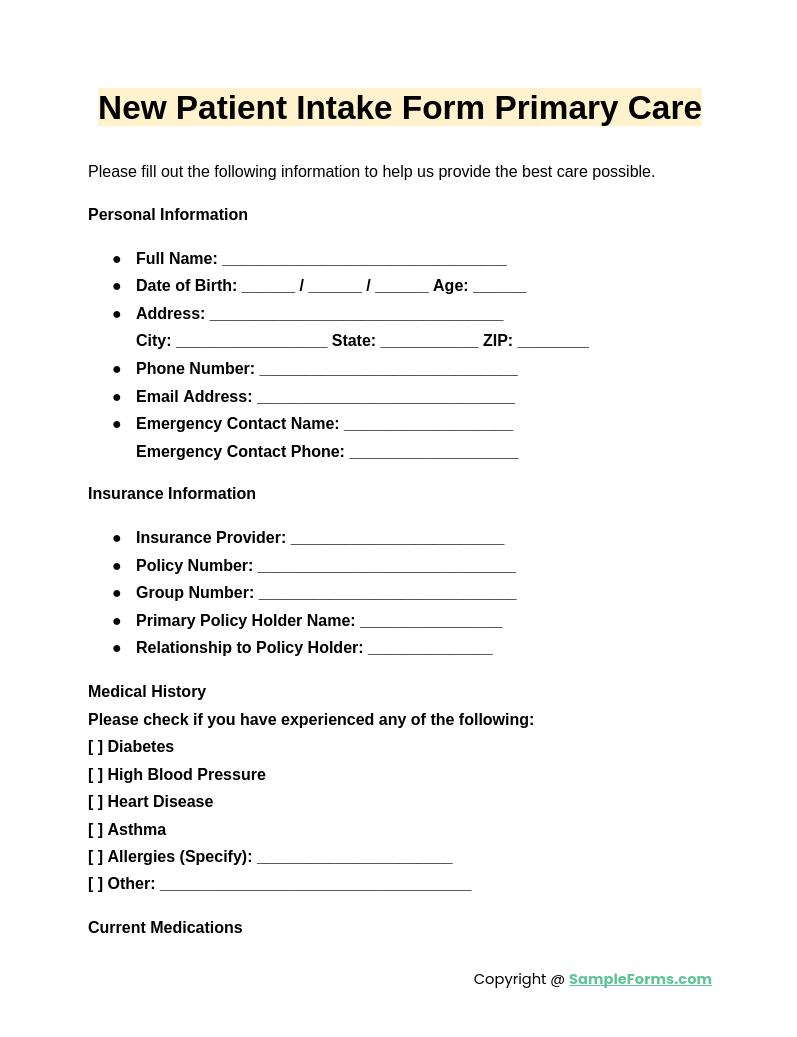
A New Patient Intake Form for Primary Care collects vital personal and medical history details. Similar to a Client Intake Form, it ensures efficient patient onboarding and comprehensive care by providing healthcare providers with essential information.
New Patient Medical Intake Form
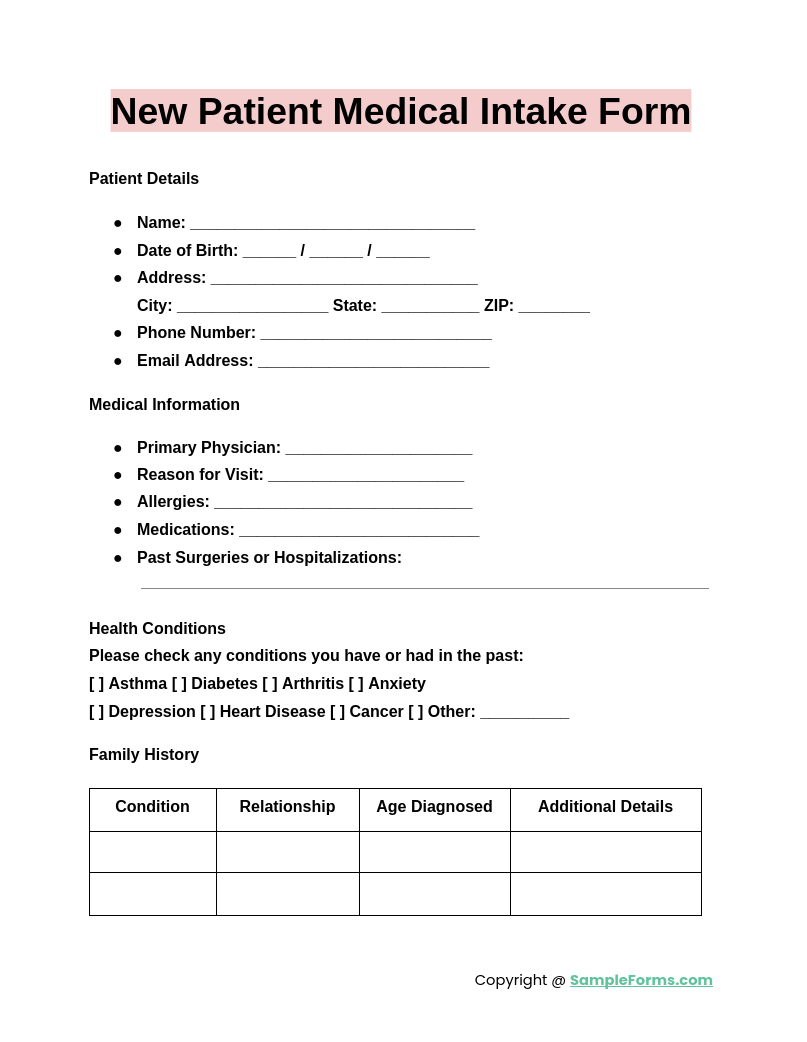
A New Patient Medical Intake Form gathers health history, allergies, and medications. Like a Coaching Intake Form, it ensures detailed and tailored patient assessment, enabling accurate diagnosis and personalized medical treatment plans for improved outcomes.
New Patient Intake Form Dental
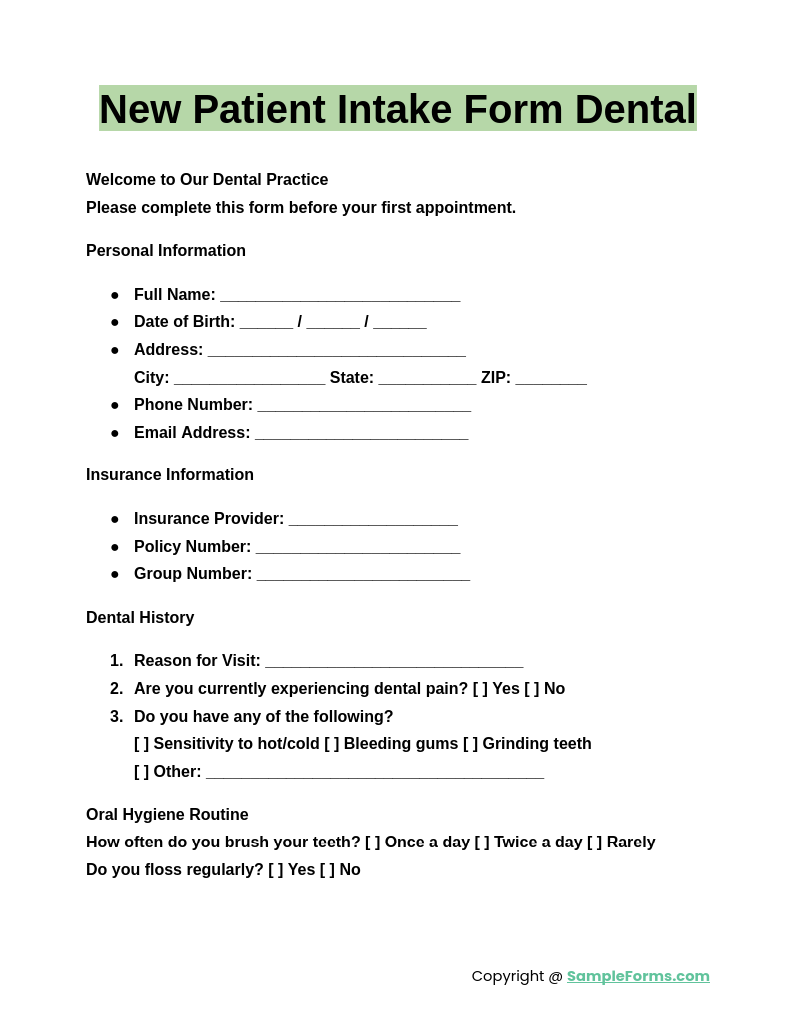
The New Patient Intake Form for Dental care captures oral health history, insurance, and lifestyle habits. Similar to a Massage Intake Form, it ensures focused care by addressing specific patient needs and improving treatment precision.
New Patient Client Intake Form
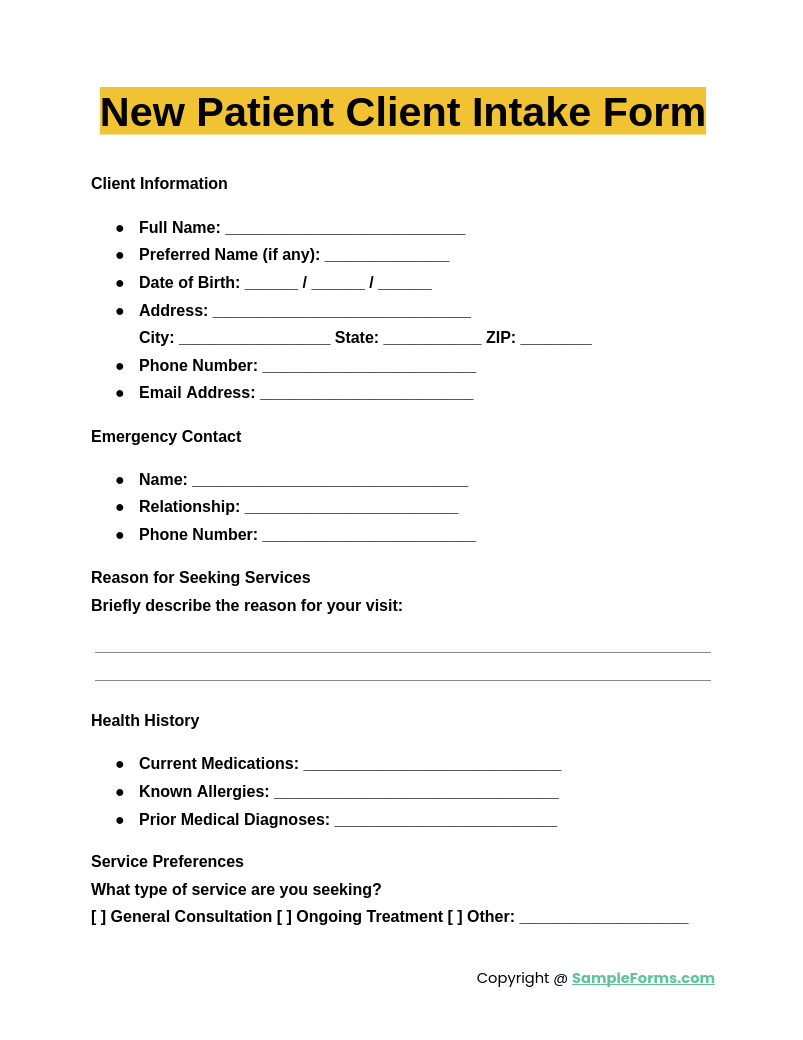
A New Patient Client Intake Form is versatile for various services, gathering necessary information. Like a Counseling Intake Form, it promotes efficient documentation, clear communication, and personalized care, enhancing overall client satisfaction and service delivery.
Browse More New Patient Intake Forms
New Patient Intake Form
Family Practice New Patient Intake Form
Medical Pharmacy New Patient Intake Form
Neurology New Patient Intake Form
New Patient Intake Paperwork Form
New Clinic Patient Intake Form
New Patient Intake Form Sample
What should patient intake form include?
A patient intake form should collect essential details for accurate medical records. Similar to an Assessment Intake Form, it ensures comprehensive documentation and effective treatment planning.
- Personal Information: Name, date of birth, contact details, and emergency contact information.
- Medical History: Past illnesses, surgeries, allergies, and ongoing treatments.
- Insurance Details: Provider name, policy number, and coverage details.
- Consent Section: Authorization for data usage and medical procedures.
- Lifestyle Factors: Habits like smoking, alcohol consumption, and exercise routines relevant to health assessments.
How to navigate an intake session with a new therapy client?
Navigating a new therapy client session requires empathy and organization. Similar to a Family Intake Form, it establishes rapport and gathers critical information.
- Build Rapport: Start with a warm introduction to make the client comfortable.
- Clarify Objectives: Explain the purpose of the intake session and its structure.
- Gather History: Ask about personal, medical, and emotional background relevant to therapy goals.
- Discuss Goals: Identify what the client hopes to achieve through therapy.
- Summarize and Confirm: Review the information and ensure the client agrees with the approach.
Why is it important for a new patient to complete a patient registration form?
Completing a patient registration form ensures accurate record-keeping and personalized care. Like a Psychotherapy Intake Form, it enhances communication between patient and provider.
- Establishes Records: Creates a database for future reference and treatment.
- Facilitates Communication: Ensures both parties understand medical history and expectations.
- Legal Compliance: Meets documentation requirements for healthcare regulations.
- Improves Efficiency: Streamlines the onboarding process for faster care delivery.
- Reduces Errors: Minimizes miscommunication by providing accurate, detailed information.
What is the purpose of the patient intake form?
A patient intake form ensures healthcare providers gather critical information to deliver effective treatment. Similar to a Patient Intake Form, it streamlines operations and enhances care.
- Information Gathering: Collects medical, personal, and insurance details.
- Supports Diagnosis: Provides context for identifying health issues.
- Ensures Continuity: Maintains consistent records across visits.
- Facilitates Consent: Obtains necessary approvals for treatments.
- Improves Patient Experience: Simplifies administrative tasks for a smoother process.
What are the steps in the intake process?
The intake process ensures efficient onboarding of new patients. Like a Physical Therapy Intake Form, it is systematic and thorough for seamless healthcare delivery.
- Initial Contact: Schedule an appointment and provide instructions for completing forms.
- Form Submission: Patients submit completed intake forms, ensuring all details are accurate.
- Verification: Validate insurance and medical history provided.
- Consultation: Conduct an initial discussion to assess patient needs.
- Documentation: Record findings and finalize any required authorizations.
When should a new patient complete the required new patient forms?
New patient forms, like a Mental Health Provider Intake Form, should be completed before the first appointment to streamline registration and treatment.
Do you have to go to school for patient registration?
Patient registration doesn’t require formal schooling but may benefit from training, similar to creating a professional Chiropractic Intake Form for accuracy.
What should a client intake form ask about?
A client intake form, like a Project Intake Form, should include personal details, health history, insurance information, and consent sections.
What does patient intake consist of?
Patient intake involves collecting information such as personal data, medical history, and insurance details, similar to a Pediatric Intake Form for detailed care.
What is another name for an intake form?
An intake form is also known as a Medicine Patient Intake Form, as it gathers essential information for diagnosis and treatment.
What happens during intake?
During intake, patients provide information, undergo assessments, and set treatment goals, similar to a Care Provider Intake Form process.
What is a common mistake when pre-registering patients?
A common mistake is incomplete forms, leading to delays, much like errors in an Event Planning Intake Form disrupting timelines.
Does the client have to fill out a intake form?
Yes, clients must complete intake forms, similar to a Patient Release Form, to provide consent and ensure accurate information for services.
What to expect at an intake session?
Expect to discuss personal and medical history, similar to completing a Patient Information Form, ensuring tailored care and treatment plans.
Why use an intake form?
An intake form organizes vital information, ensuring accuracy and efficiency, much like a Patient Satisfaction Questionnaire Form streamlining care processes.
The Patient Counseling Form enhances patient communication by gathering relevant data for informed care. Learn how intake forms streamline documentation and ensure seamless patient experiences. Tailored templates simplify healthcare operations effectively.
Related Posts
-
FREE 4+ Immigration Intake Forms in PDF
-
FREE 4+ Psychotherapy Intake Forms in PDF
-
FREE 21+ Counseling Intake Forms in PDF | MS Word
-
FREE 4+ Therapy Intake Forms in PDF | MS Word
-
FREE 4+ Project Intake Forms in PDF | MS Word
-
Massage Intake Form
-
Coaching Intake Form
-
FREE 4+ Event Planning Intake Forms in PDF | MS Word
-
FREE 7+ Medical Intake Forms in PDF
-
FREE 10+ Sample Assessment Intake Forms in MS Word | PDF
